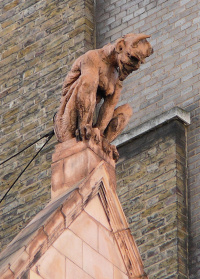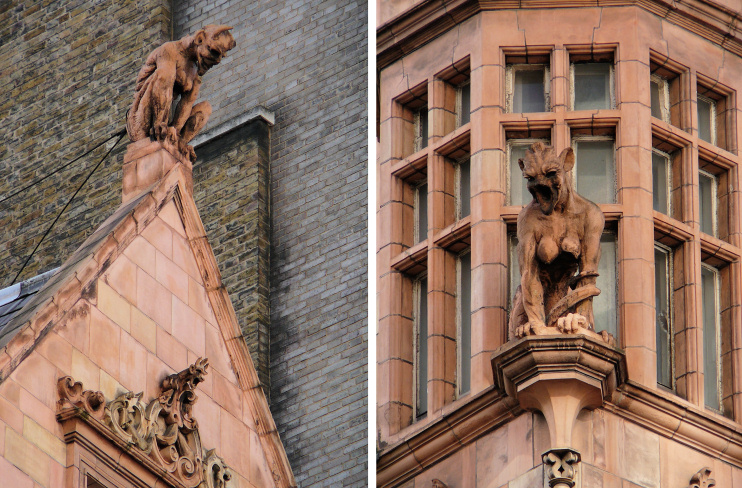Cornhill Devils
The three devils of St Peter
The Cornhill Devils, 54 and 55 Cornhill, City of London

The square mile of the City of London has distinct hills and valleys, although their slopes are gentle and the natural topography is nowadays overshadowed by man-made structures. To the earliest settlers here, the undulations of the landscape would have stood out far more clearly than they do today and the uppermost spots were routinely chosen as sites for places of worship.
The City’s highest natural elevations are the crests of Cornhill and Ludgate Hill. St Peter’s church was built upon the former and St Paul’s Cathedral atop the latter – on the site of an earlier church, which was probably preceded by a Roman temple dedicated to Diana.
The first incarnation of St Peter upon Cornhill is said to have been the earliest place of Christian worship in Britain. Many authorities dismiss this as a myth and it’s almost certain that the story that King Lucius founded St Peter’s in AD179 (other sources say 187) is bogus, as is the claim that it remained the chief Christian church of the kingdom until the establishment of Canterbury Cathedral more than 400 years later.
Nevertheless, there’s plenty of evidence that St Peter’s has a very long history, although the present structure dates from its reconstruction by Sir Christopher Wren following the Great Fire of London.
Despite its importance, St Peter’s is now almost hidden from view at street level by the office blocks that have gradually enveloped it – a sequence of events that no doubt dismayed successive rectors.
Late in the 19th century, so the story goes, one vicar achieved a small victory over the developers when he examined the plans for a new neighbouring building and found that it would intrude fractionally onto the church’s property. The architect was forced at great cost to redraw the plans and, by way of revenge, he added three fiendish terracotta figures, two large and one small, glaring down from the upper reaches of his new building. One of the grotesques is said to have been modelled on the offending vicar, although if this is true he must have been a very ugly man indeed.


